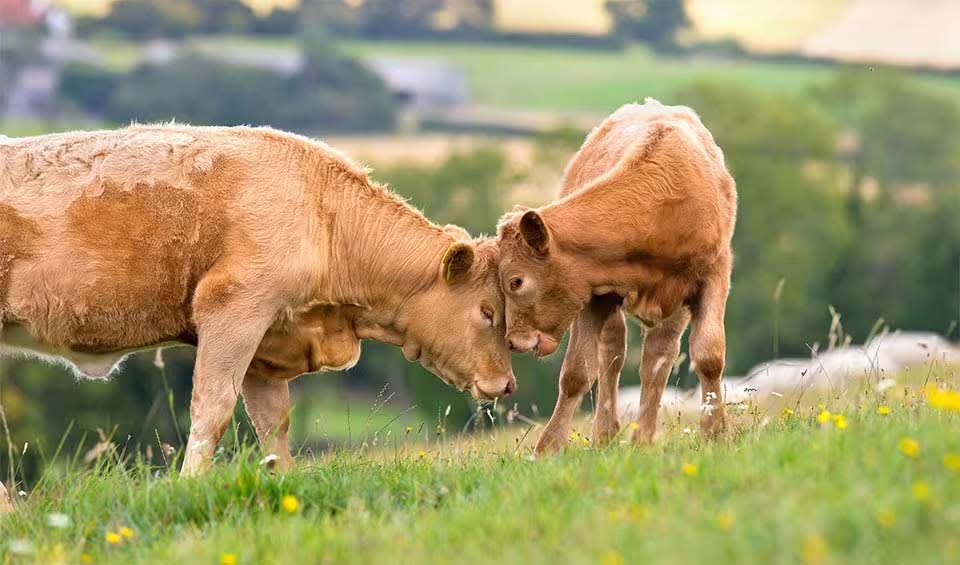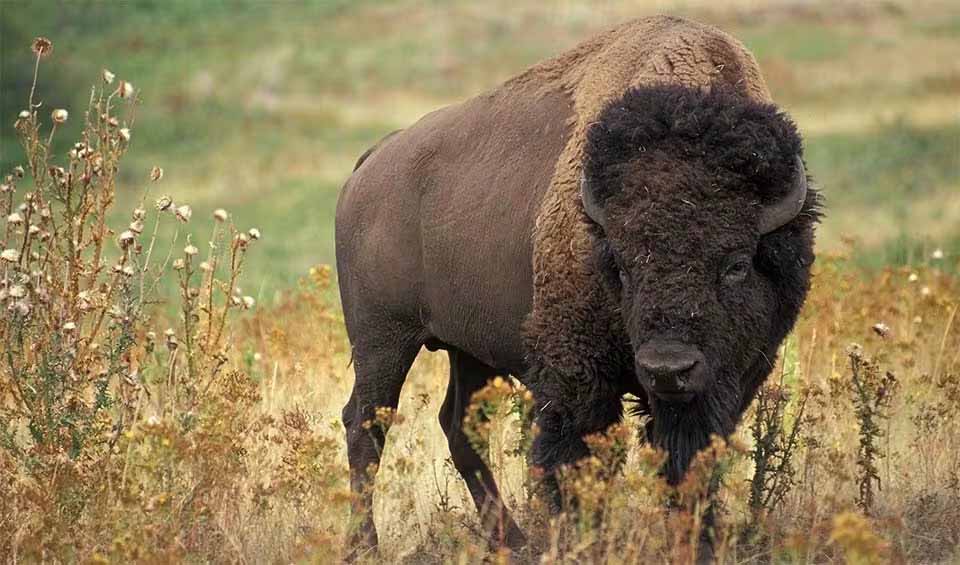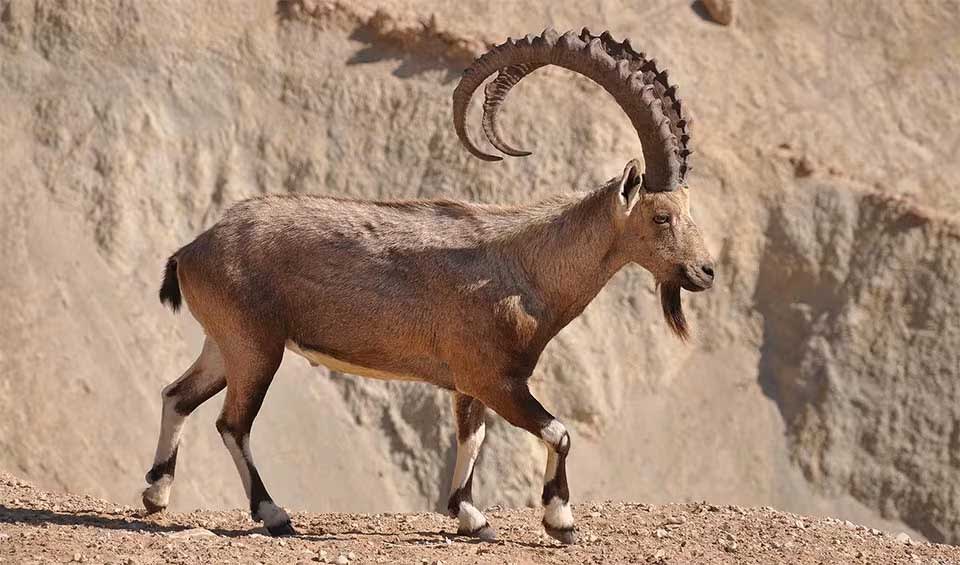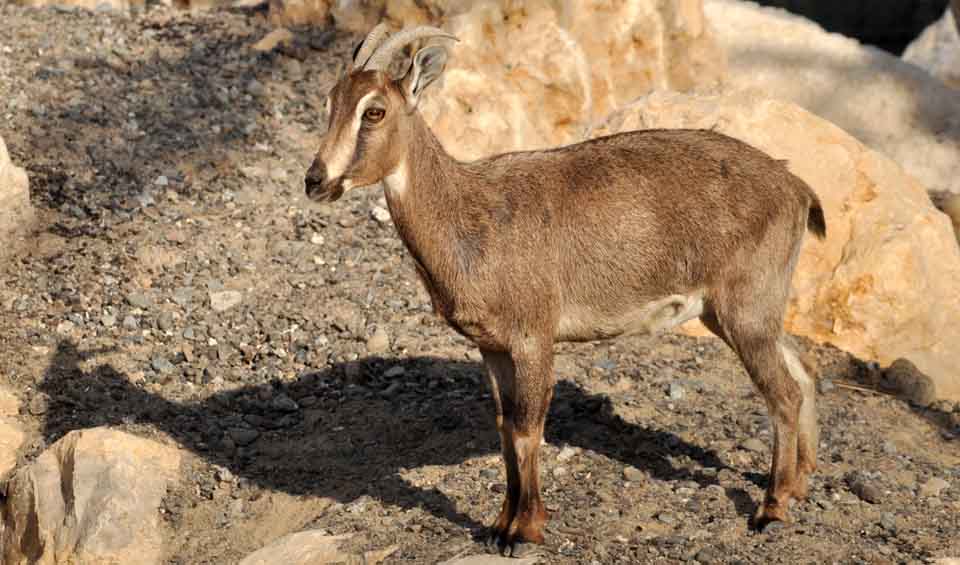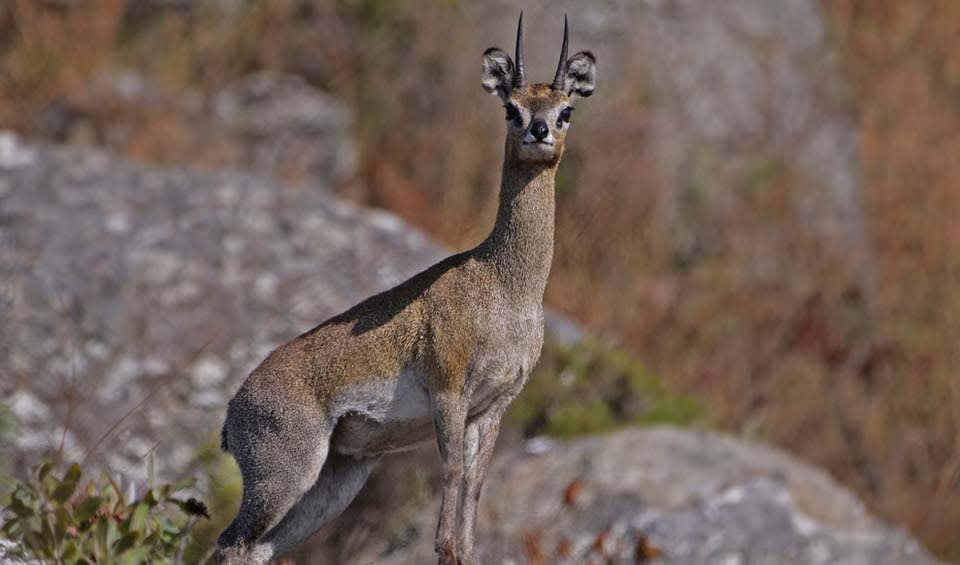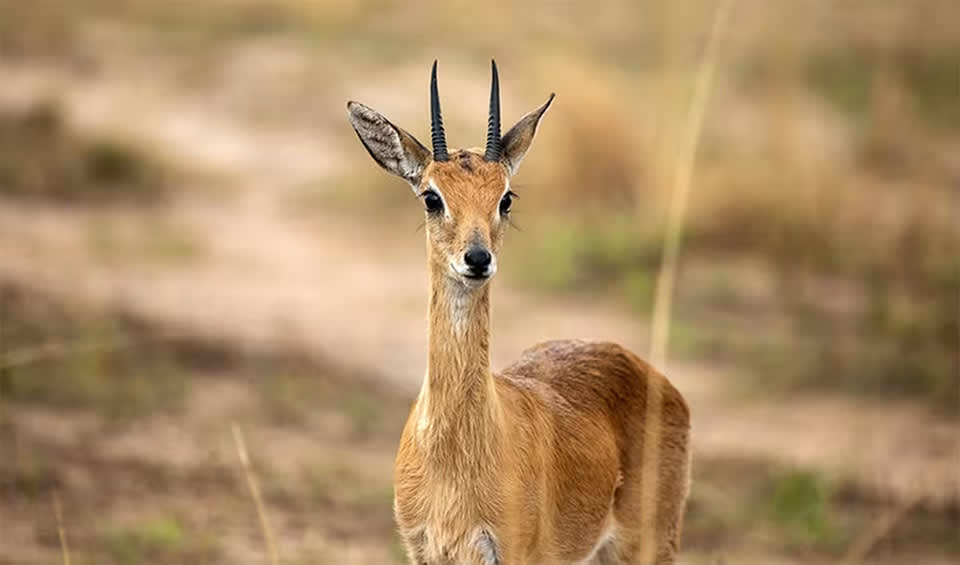Bovidae – Antelopes
From the graceful gazelle to the indomitable buffalo, the most diverse family of ungulates is a digestive success story!
Antelopes, loosely used to categorize various species within the Bovidae family, embody an astonishing diversity of forms, sizes, and ecological niches. This family includes true antelopes found primarily in Africa and Asia and other members like cattle, goats, and sheep. The size variation within the Bovidae family is remarkable, ranging from the formidable gaur, which can weigh as much as 1,500 kg (1.6 tons) and stand tall with muscular builds, to the delicate dik-diks and the royal antelope, each barely reaching 2 kg (4.4 pounds) and standing no taller than a standard ruler.
The horns of these animals are one of their most distinctive features, made of bone and covered in a layer of keratin, the same material that makes up human hair and nails. Unlike antlers in deer, which are shed annually, bovid horns are permanent and continue to grow throughout the animal’s life. These horns serve various purposes, including defense against predators, combat between males during mating seasons, and symbols of sexual selection, with females often preferring males with larger and more imposing horns.
Living in environments ranging from arid deserts to lush forests, bovids have developed complex social structures. Most species exhibit herd behavior, with group sizes varying from a few individuals to hundreds. These herds offer protection against predators, as there is safety in numbers, and the larger bovids, such as buffalo, are known for their formidable defense strategies against lions, hyenas, and other threats. Mothers are particularly protective of their calves, often putting themselves at risk to fend off attackers.
Conservation efforts for bovids are critical, as highlighted by the International Union for Conservation of Nature (IUCN). Approximately 85% of bovid species and subspecies need conservation attention due to threats such as habitat destruction, hunting, and competition with livestock for resources. Conservation strategies include habitat preservation, sustainable management practices, and legal protections against poaching and illegal trade.
Genera in this family
Bovines
Medium- to large-sized antelope-like bovines of Central & South African forests
Whether grazing on lush grasslands or gracefully swimming through rivers, they demonstrate an unparalleled capacity to conquer various terrains
A genus of wild and domestic cattle closely related to the genus Bison
Numerous species of this genus have become extinct in the last 10,000 years
This genus is home to the giant eland – the largest antilope
Have an awkwardly stiff gait, kind of like they’re walking in slow motion with exaggerated leg lifts
Resembling a mix between a goat and an antelope, which gives it a distinctive and somewhat unusual look
An icon of Arctic wildlife but also a living link to the Earth’s glacial past
A real-life unicorn hiding in the depths of Southeast Asia’s dense forests
They are also known as the “black death” or “widowmaker,” which says a lot about them – dangerous!
Antilopines
Gazelles don’t race cheetahs – they outsmart them!
These talented climbers inhabit steep mountains; the genus also includes the domestic goat
A mix of goat and antelope wrapped in shaggy fur, built for steep slopes and silent survival
African antelopes of marshes, floodplains, or other grassy areas near water bodies
Highly sociable caprines species known as sheep, including domestic sheep
Medium-sized African antelope species with unusual body shapes
Dik-diks are small, cute-looking antelopes that make a distinct dik-dik sound
“Shadow goats” of Asia
Large desert antelopes, including Arabian oryx that was saved from extinction
Some gazelle herds are up to 700 individuals, while others like to keep the party small and separated by gender
Known to be excellent climbers from a very young age
Different types of horns and face markings help identify gazelle species in this genus
Despite their name, they are not true gazelles; are considered the ancestor of goats
Petite stature, distinct horns, and remarkable grace set these antelopes apart from their family
The antelopes with beautiful horns included in this genus are always active and alert
Living on a carpet of grass, they are commonly known as Gnus
Researchers discovered in 2014 that global warming and climate change are causing these goats to shrink in size
Spends most of its life without drinking water, deriving enough moisture from its food and dew on plants
One of the most successful African sprinters
They enjoy a sedentary and lazy lifestyle but run fast if they sense danger
Remarkably athletic jumpers, able to leap nearly 2 meters (6 feet) straight up when startled
Even baby tahrs—called kids—can scale steep cliffs just days after birth!
The national animal of South Africa and even lend their name to a South African rugby team
People sometimes call it the “four-eyed antelope” because of the dark spots under its eyes
Its large, rabbit-like ears are what gave it the species name megalotis, meaning “big-eared”
A giraffe look-alike antelope
Despite their name, mountain goats are not goats —but antelopes, known more properly as goat-antelopes
Natural-born climber, capable of leaping with incredible agility across steep cliffs and boulder-strewn slopes
They benefit from wildfires as they can return to the area that recovered from fires to eat fresh grass
Its wool, shahtoosh, is so fine that a shawl made from it can pass through a wedding ring
Despite being called “blue sheep,” bharals are more closely related to goats than true sheep
Nature’s masterpiece, with a snout that steals the spotlight
And they live up to the name — these little antelopes are known for diving headfirst into thickets when spooked



